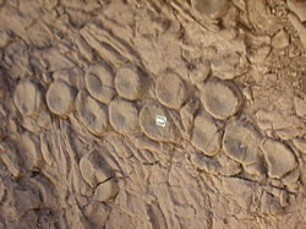Giant, Super Intelligent 'Kraken' May Have Eaten Dinosaurs: Scientist

An unusual Triassic burial site has scientists postulating the existence of a massive octopus-like creature similar to the mythological Kraken.
Mount Holyoke College paleontologist Mark McMenamin formulated the theory after exploring a Nevada site containing the remains of nine ichthyosaurs, massive creatures that once dominated the oceanic food chain. But something struck McMenain as peculiar: the icthyosaur bones lay in a pattern that seemed to indicate they had deliberately arranged.
It became very clear that something very odd was going on there, McMenamin said in a press release. It was a very odd configuration of bones.
That had McMenamin wondering whether a larger, intelligent predator may have neatly organized the bones. The modern octopus is known to shuffle bones around purposefully, leading McMenamin to theorize that the icthyosaurs could have been stalked by a huge, intelligent invertebrate like the kraken of lore.
I think that these things were captured by the kraken and taken to the midden and the cephalopod would take them apart, McMenamin said.
The proposed kraken would have been the most intelligent invertebrate ever. McMenamin said that there is precedent for a confrontation similar to a kraken-like creature attacking the dangerous icthyosaur, noting that the staff of the Seattle Aquarium recently discovered their sharks were being killed by an octopus that shared their tank.
We think that this cephalopod in the Triassic was doing the same thing, said McMenamin, noting that many of the fossils had broken ribs. It was either drowning them or breaking their necks.
The kraken is a recurrent figure in Scandinavian lore, usually described as a titanic octopus-like creature that preys on ships. It later made its way into some earlier scientific classifications of animals. In 1830 the English poet Alfred Tennyson published a sonnet entitled The Kraken, which begins like this:
Below the thunders of the upper deep;
Far far beneath in the abysmal sea,
His ancient, dreamless, uninvaded sleep
The Kraken sleepeth: faintest sunlights flee
About his shadowy sides; above him swell
Huge sponges of millennial growth and height;
© Copyright IBTimes 2025. All rights reserved.





















